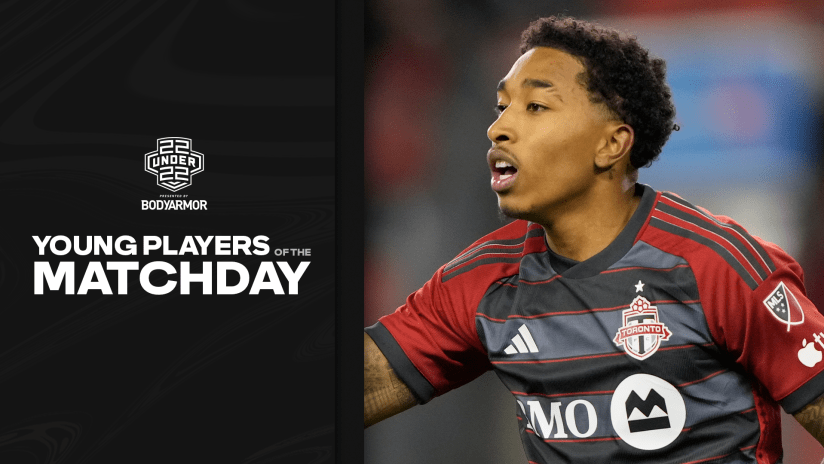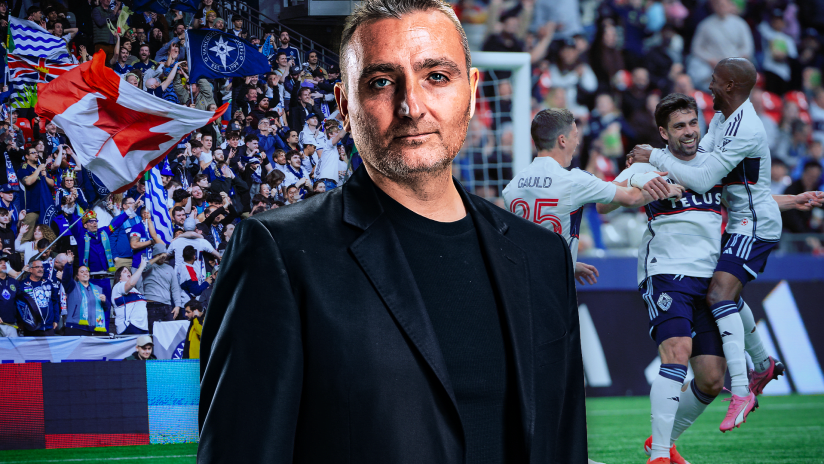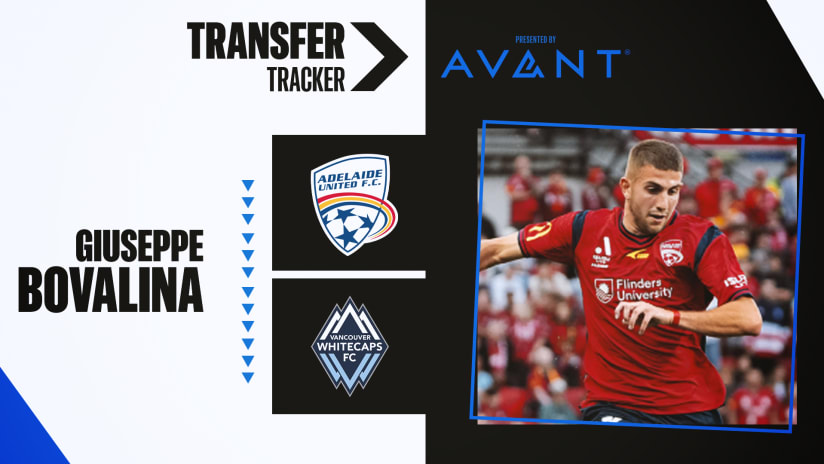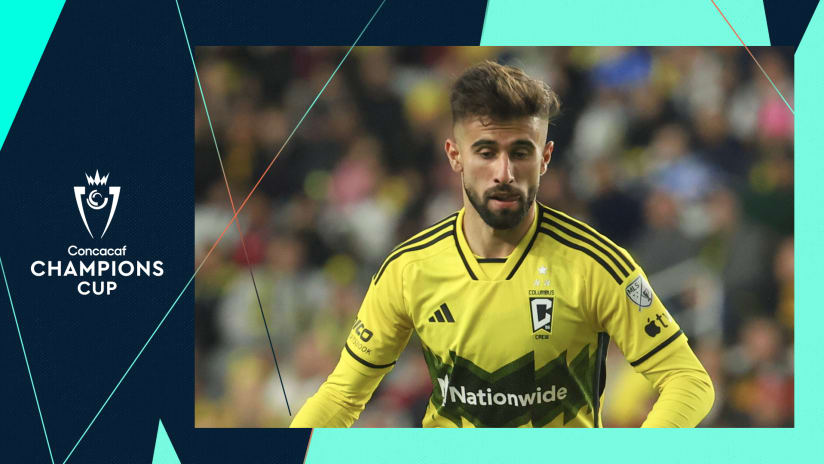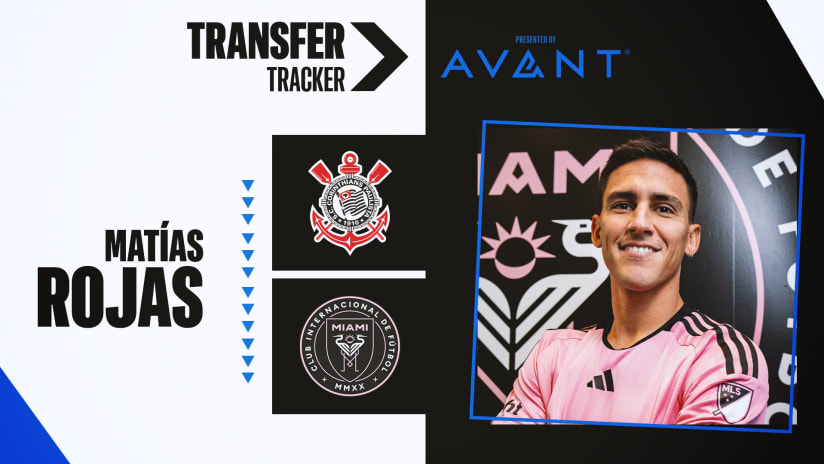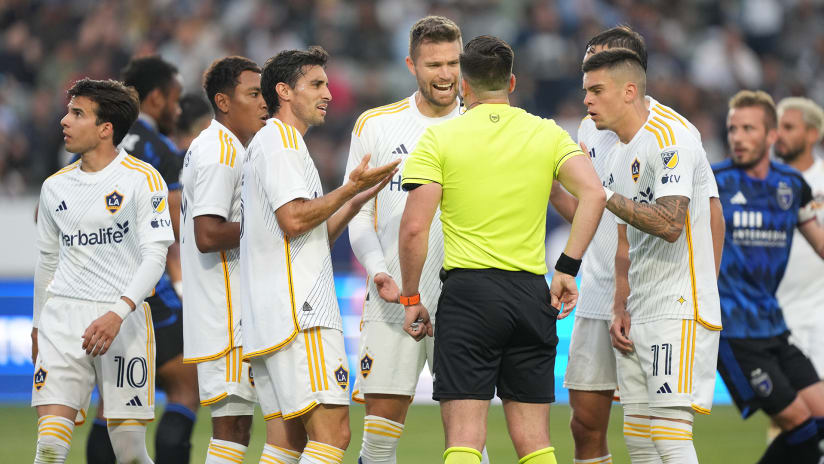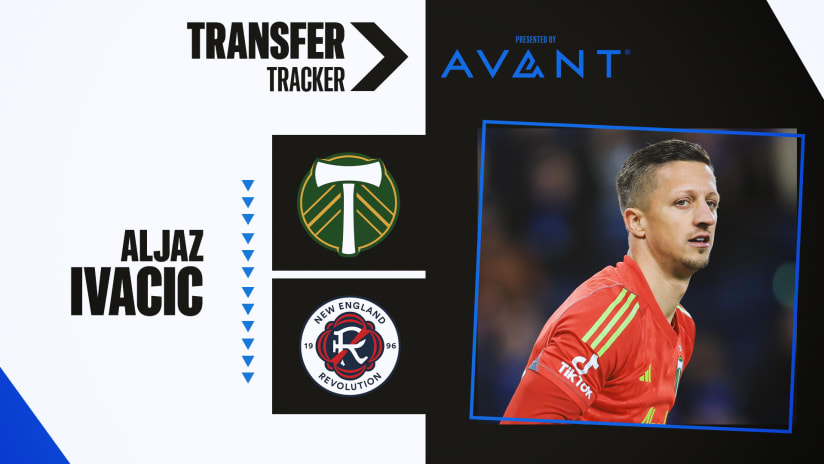EDITOR'S NOTE: Cuauhtemoc Blanco, arguably the biggest cult hero in Mexican soccer history, proved to be a game-changing acquisition both on and off the field for the Chicago Fire. On the anniversary of the day he was unveiled to the city on April 3, 2007, here's a look back at the legacy of one of the league's most unique characters.
Major League Soccer found itself in the grip of David Beckham fever in the summer of 2007, with breathless media coverage of the English megastar’s arrival at the LA Galaxy reaching a level rarely seen in US or Canadian soccer history.
Over in Chicago, however, a different and in some ways even more valuable star had just landed at the dawn of the Designated Player era: Mexican icon Cuauhtemoc Blanco. And he took the Windy City by storm.
“When people would see him they would go crazy, it was almost like they were ready to faint,” recalled former Fire player, coach and executive Frank Klopas in a conversation with MLSsoccer.com this week, comparing the adulation of Blanco to his visits to Barcelona with Hristo Stoichkov.
“It was an interesting contrast against the backdrop of Beckham,” said Nick Firchau, who covered the Fire for the Daily Southtown and Evening Tribune in that time before a stint with MLSsoccer.com. “Blanco came and was actually immediately more effective as a player, but also had a resonance with a different fan group. He wasn’t a superstar in everyone’s eyes, but he was a superstar to the Mexican and Mexican-American community in Chicago.”
Blanco joined the Fire in the summer window, after completing the season at Liga MX (then known as the Primera Division) giants Club América. But the Fire got the first taste of his impact a few months prior when they hosted him for an impromptu unveiling event at SeatGeek Stadium (then Toyota Park), which had opened the previous year.
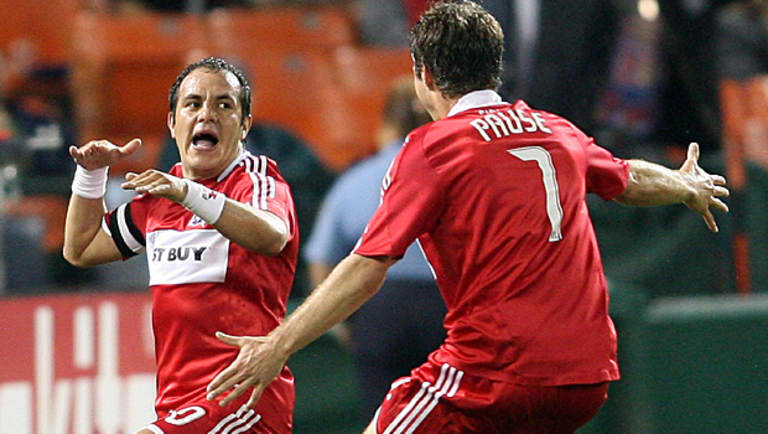
Blanco celebrating a goal with Fire teammate Logan Pause | Getty Images
With the unveiling scheduled for 5 pm, general manager John Guppy was surprised to look out his window at lunchtime and see a handful of fans already standing outside his office.
“That line just grew, and grew, and grew. Our unofficial count was about 5,000 people that came to that happening,” Guppy told Chicago Fire Confidential two years ago. “We were shocked at that many people, on that short a notice, and it was really just purely through the power of just who he was. We obviously knew his status, but to see that in the flesh was very rewarding and exciting. We knew that we were about to begin a new chapter with the club with a player that has a gravitas, has a status, that frankly we didn't have at that time.”
“We had more fans [at the unveiling] than we’d probably had the game before,” former Fire striker Chris Rolfe said with a chuckle.
Despite fears that the famously combustible Blanco would torpedo the chemistry of an already-strong squad featuring the likes of Rolfe, Chris Armas and Justin Mapp, the El Tri legend turned out to be a model teammate.
“Everything you wanted in a player,” said defender CJ Brown, now a New York Red Bulls assistant coach. “He was a competitor, loved to win – and he didn’t just love to win on the weekend, he loved to win in practice, in anything and everything we did. I liked everything about him.”
Blanco proved a feisty, cunning handful for opposing defenses, scoring 16 goals and 26 assists in 62 regular-season games. And he also kept his own team on their toes.
“You had to have your head on a swivel with him, because it was literally like April Fool’s every day,” said Philadelphia Union head coach Jim Curtin, a center back on that Fire team.
“He was probably the best prankster I’ve ever been around,” said Brown. “I can say some of them were actually really, really good and some of them were way overboard.”
Recalled Rolfe: “He would goof around – he really picked on Calen Carr.”
“He used to call me Espaguetis [Spaghetti] because I had really curly, moppy hair,” said Carr, back then a pacey attacker, now an MLSsoccer.com analyst. “I do remember one day he tied me up to one of the rolling chairs in the training room, him and Wilman Conde … and pushed me out into the parking lot at Toyota Park.
“I never really got an explanation as to what I had done to deserve this punishment.”
Blanco’s English was minimal, but he still bonded readily with his colleagues, often via laughter.
“I forget what [road] trip it was on but it was around Halloween,” remembered Rolfe. “He would hide throughout the hotel with some type of Halloween mask, and he thought it was so funny – he would hide underneath the snack table, under the tablecloth, and he would jump out and scream and scare guys.”

Blanco in another lighthearted moment | Getty Images
That playful nature manifested itself on the pitch, too. Cuauhtemoc loved to entertain his fans, who turned out in big numbers not only at Toyota Park but for Fire away games as well.
“I can remember we were playing in a tight game, I think we had just scored to make it 2-0 and he’s literally, for the crowd, trapping balls with his ass and getting the crowd into it,” said Curtin with a laugh. “He took all the practical joking and being the center of attention and he could replicate it within the 90 minutes… he tried some of the craziest stuff in the games.”
From his signature cuauhtemiña (bunny-hop) move to his half-field run-up on penalty kicks, Blanco’s style was unorthodox and his body ungainly, at least on first glance. Arriving in Chicago at the age of 34 – he would go on to play well into his 40s – he quickly dispelled any doubts about his ability to handle the rough-and-tumble of MLS, however.
“You look at him and you’re like, ‘man, I think physically I should be able to handle this guy,’” said Brown. “And I would do 1v1s with him and he would beat me every time. I was like, ‘this is not real.’
“The next day after games, he’s got bruises up and down the back of him because he likes to shield and hold the ball. And he would be right there, up and at it trying to train again.”
Blanco’s legions of adoring devotees led the Fire to begin traveling with a security escort, a burly bodyguard nicknamed “Big Juan” by the team. It was just one example of the effect of Blanco’s outsized persona. Chicago, for example, parlayed his signing into a jersey-sponsorship deal with Best Buy – the first in club history – coinciding with the electronics retailer’s expansion into Mexico.
“ESPN Deportes invited me to speak about Blanco on multiple occasions,” said Luis Gomez, who covered the Fire for the Chicago Tribune from 2005-09. “And a local publisher asked me to write a book about Blanco, which I turned down. We also did a pullout section at the Tribune to preview the MLS season and Blanco’s first year with the Fire. That four-page preview should be a collector’s item, because I don’t see it happening again.”

Blanco on the cover of ESPN Deportes magazine | Courtesy of Chicago Fire
At that time a cash-strapped league of 13 teams with modest wages and spending to match, MLS had precious few players on his financial or footballing level. Blanco’s salary, reported at $2.7 million a year, was second only to Beckham’s, and he did not hesitate to spend on his teammates.
“One of the very first trips we went on,” said goalkeeper Jon Busch, “I think we were delayed at the airport. Him and Big Juan disappeared, and next thing you know he comes back with like six or seven pizzas … he wanted to make sure the boys had eaten and were taken care of.”
While Beckham drew flack when it was revealed in Grant Wahl’s book “The Beckham Experiment” that teammates noticed how rarely he picked up the tab at dinners, Blanco’s generosity was ample. The morning after one Fire road match vs. the LA Galaxy, Chicago’s reserves were playing their Galaxy counterparts at what was then called the Home Depot Center, and the first team was to pick them up on the way to the airport.
“Blanco told the bus driver to pull over to an In-N-Out Burger,” related goalkeeper Matt Pickens. “He grabbed about, I want to say roughly 30 or 40 burgers for the whole team. So he bought for the guys that were on the bus and then he bought for the group that was playing in the reserve game, so they would come on the bus and have it. Just one of those gestures I remember. Who’s going to turn down an In-N-Out burger?”
Blanco’s presence raised the bar in multiple ways. In Brown’s words, “When he came around, everything tightened up a little bit. The hotels were nicer, the travel with security … you’re starting into a bigger league of players and we all reaped the rewards of that.”
Said Curtin: “All of a sudden there were people at our training sessions, the stadium was full. … In a league that – I hate to say it – didn’t have millionaires in it, he was a millionaire and he was a superstar.”
Yet the Fire didn’t truly understand the Cuauhtemoc phenomenon until they jetted to his homeland for preseason training camps.
“Preseason in Mexico was nutty,” laughed Rolfe. “That was the real security detail – fans shaking the bus after our games. I saw a lady take her infant and pass the infant – she was like eight people back – and they passed him up to Blanco, Blanco holds him, kisses him and passes him back.
“Some guy pulled up in a yellow pickup truck that was decked out with Club América decals everywhere, legends of Club América painted on the side, Blanco was one of them. And he came out of the truck and had Blanco sign his forearm from the crease of his elbow down to his wrist. The dude came back the next day to the hotel and was waiting for us when he got back from training and he’d had it tattooed on his arm, Blanco’s autograph.”
When the final preseason match of that trip was cancelled due to poor pitch conditions, the fans who’d planned to watch their hero at the stadium simply migrated towards the team hotel.
“There were thousands – thousands! – of fans out in front of the hotel trying to get some sort of glimpse of Cuauhtemoc,” said Busch. “They had to sneak him out the back door, through the kitchen, and put him in the trunk of a car to get him out of the hotel that night and meet us at the airport the next day. We had no idea where he stayed for the night, but we showed up at the airport and 20 minutes later he showed up at the airport.”
Those are just a few of the stories around Blanco’s time in Chicago – though even 12 years later, several former teammates elected to limit their recollections to the “PG-13” sort.
“I don’t want to get him in trouble. He’s a politician now, isn’t he?” joked Curtin, alluding to Blanco’s current gig as the governor of Mexico's Morelos state. “Which is the funniest thing in the world, by the way.”
Blanco didn’t keep his nose entirely clean on his Fire adventure. Gomez recalled him getting into a fistfight in 2008 with his teammate Wilman Conde, who’d requested a trade earlier in the year. A few weeks later he punched D.C. United’s Clyde Simms, then allegedly head-butted a United team official after not leaving the pitch in a timely manner in a wild U.S. Open Cup match at the Maryland SoccerPlex, earning one of the longest bans in Open Cup history.
He had a temper, and obviously delighted in playing the heel. But that intensity, paired with his skill and vision, made the Fire a perennial contender.
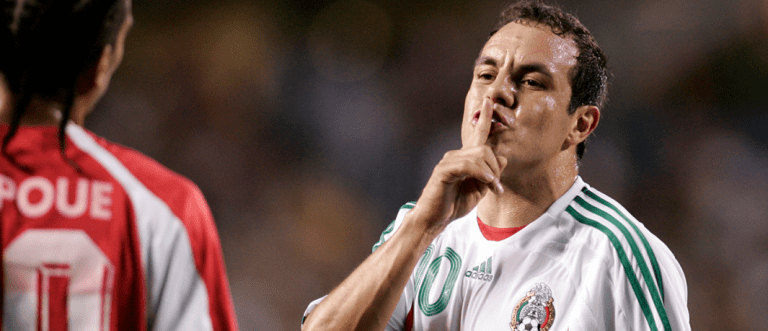
Blanco shushes an opponent during a Mexico match | USA Today Sports Images
“You could tell he got under everybody’s skin,” said Pickens, now with USL club and 2020 MLS expansion side Nashville SC. “He was not a guy that people liked to play against, whatsoever. But awesome, awesome to have on your team.”
Despite estimates suggesting Chicagoland is home to as many as a million Mexicans and Mexican-Americans, Cuauhtemoc is one of only five El Tri players ever to suit up for the Fire, along with Jorge Campos, Nery Castillo, Pavel Pardo and Guillermo Franco. Which begs the question: Might the Men in Red try to sign a new Blanco-level figure as they prepare to relocate from Bridgeview to (reportedly) downtown?
Fire president and GM Nelson Rodriguez was asked as much earlier this year.
“First, we look at the person. Does the person share our values? Will he fit with us? Second, is the player – does the player fit our game model? Do the economics work? Does the timing work?” he said. “And then third, as was the case with Przemyslaw Frankowski, they all come together and you can have a Mexican player, a Polish player in this community, and it works. But we will not put the nationality of a player before his character as a man and before his fit as a player.”
Klopas theorized that Javier “Chicharito” Hernandez is one current Mexico star who might fit the bill – but cautioned that precious few players on the planet can inspire millions like Blanco did.
“There’s not a lot of Cuauhtemocs out there, man. Believe me,” he said. “If you can find one, God bless you.”


